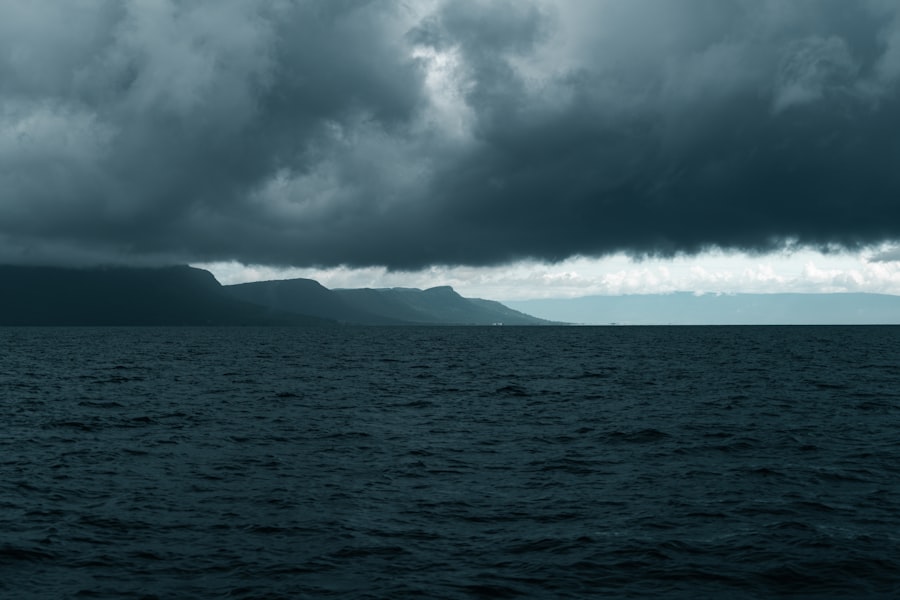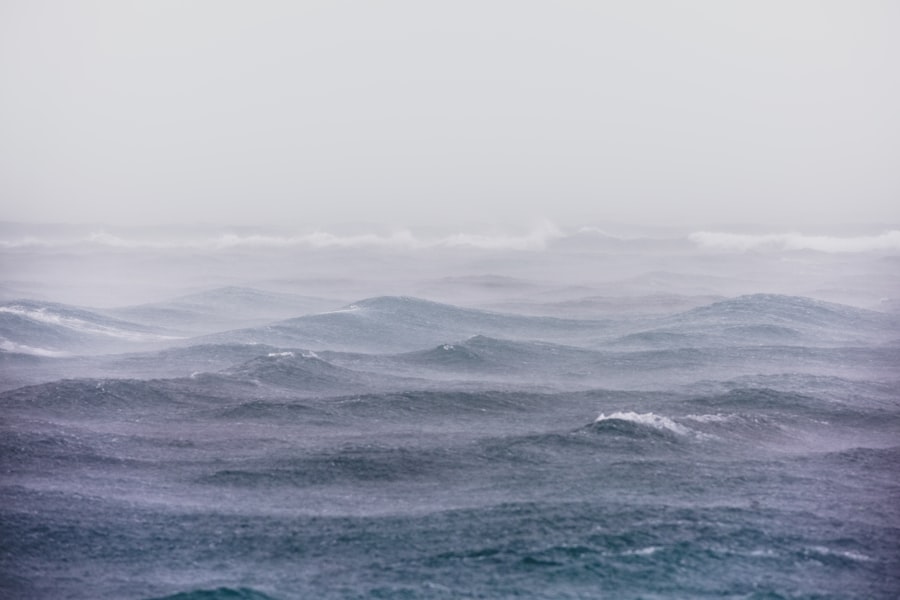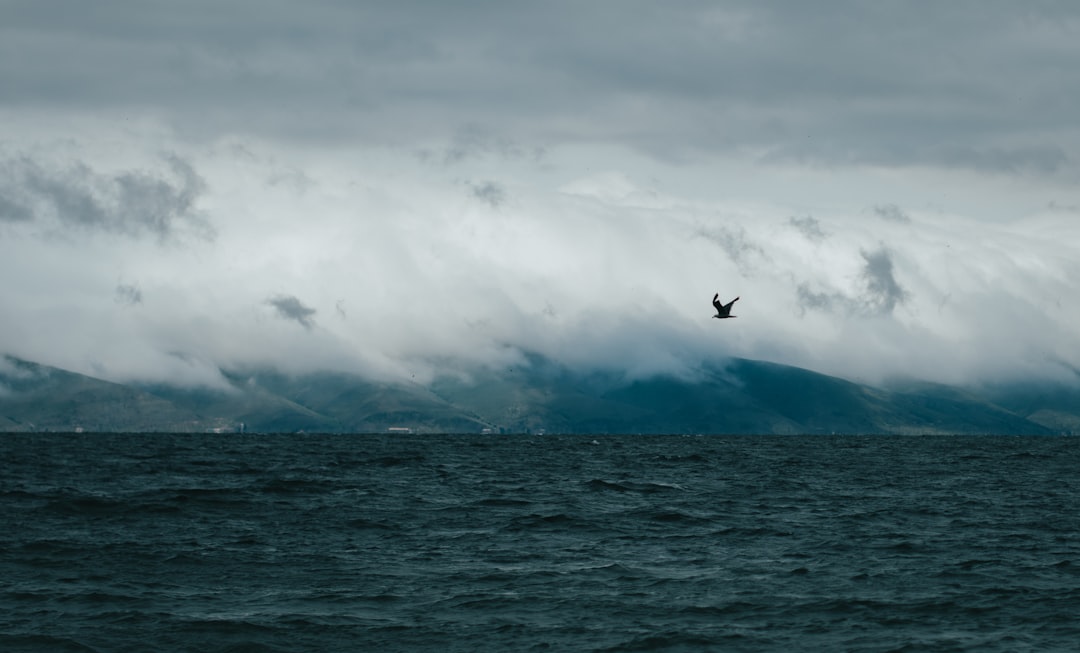The Drake Passage, a body of water located between the southern tip of South America and Antarctica, is renowned for its tumultuous seas and unpredictable weather. Stretching approximately 800 kilometers (500 miles) from Cape Horn to the Antarctic Peninsula, it serves as a critical maritime route for vessels traveling to and from the Antarctic region. The passage is not only significant for its geographical location but also for its ecological importance, as it connects the Atlantic and Pacific Oceans, facilitating the movement of marine life and influencing global ocean currents.
Navigating the Drake Passage is often considered one of the most challenging maritime endeavors due to its notorious reputation for rough seas and extreme weather conditions. Sailors and researchers alike have long been captivated by the passage’s beauty and peril, making it a focal point for exploration and scientific study. The Drake Passage embodies the duality of nature—its breathtaking vistas juxtaposed with the formidable forces that can arise without warning.
As such, understanding the intricacies of this waterway is essential for anyone seeking to traverse its waters.
Key Takeaways
- The Drake Passage is a treacherous body of water located between South America’s Cape Horn and the South Shetland Islands of Antarctica.
- Navigating the Drake Passage has been historically significant and challenging due to its unpredictable weather patterns and strong winds.
- Weather conditions in the Drake Passage are characterized by strong winds, high waves, and rapidly changing weather, making accurate forecasting crucial for safe navigation.
- Accurate forecasting in the Drake Passage relies on advanced technology and tools such as satellite data, weather buoys, and computer models.
- Climate change is impacting the Drake Passage, leading to potential changes in weather patterns and forecasting, posing new challenges for navigation.
Historical significance and challenges of navigating the Drake Passage
Historically, the Drake Passage has played a pivotal role in maritime exploration and trade. It was named after Sir Francis Drake, an English sea captain who navigated these waters in the late 16th century during his circumnavigation of the globe. The passage has since become a vital route for whalers, explorers, and researchers venturing into the Antarctic region.
However, its historical significance is accompanied by a legacy of challenges that have tested even the most seasoned mariners. The challenges of navigating the Drake Passage are manifold.
These conditions can be exacerbated by sudden storms that sweep through the region, often catching vessels off guard. The unpredictable nature of the weather, combined with the passage’s geographical features, makes it a formidable obstacle for ships. Many sailors have recounted harrowing tales of their experiences in these waters, underscoring the need for careful planning and respect for the power of nature.
Weather patterns and conditions in the Drake Passage

The weather patterns in the Drake Passage are characterized by their volatility and rapid changes. The convergence of cold polar air from Antarctica and warmer air from the north creates a unique climatic environment that can shift dramatically within hours. This phenomenon results in frequent storms, high winds, and heavy precipitation, making it essential for navigators to remain vigilant and adaptable.
In addition to storms, fog is another common occurrence in the Drake Passage, often reducing visibility to dangerously low levels. The combination of rough seas and limited visibility can create a perfect storm of challenges for vessels attempting to navigate through this treacherous waterway. Understanding these weather patterns is crucial for ensuring safe passage, as even experienced sailors can find themselves at the mercy of nature’s whims.
Importance of accurate forecasting for navigating the Drake Passage
| Metrics | Importance |
|---|---|
| Weather conditions | Accurate forecasting helps in predicting and preparing for extreme weather conditions in the Drake Passage. |
| Safety of navigation | Forecasts aid in ensuring the safety of navigation through the passage, avoiding potential hazards and risks. |
| Time management | Accurate forecasting allows for better planning and management of time during the passage, optimizing travel schedules. |
| Resource allocation | Forecasting helps in allocating resources effectively, such as fuel and supplies, based on predicted conditions. |
Accurate weather forecasting is paramount for anyone attempting to navigate the Drake Passage. Given its reputation for sudden weather changes, having access to reliable forecasts can mean the difference between a safe journey and a perilous situation. Mariners rely on advanced meteorological data to make informed decisions about when to set sail and how to adjust their routes in response to changing conditions.
The importance of accurate forecasting extends beyond mere convenience; it is a matter of safety. With lives at stake, sailors must be able to trust that they have the most up-to-date information available. This reliance on forecasting underscores the need for continuous advancements in meteorological science and technology, as well as collaboration among international agencies to share data and improve predictive models.
Technology and tools used for forecasting in the Drake Passage
In recent years, advancements in technology have significantly enhanced forecasting capabilities in the Drake Passage. Satellite imagery, radar systems, and sophisticated computer models allow meteorologists to analyze weather patterns with unprecedented accuracy. These tools enable forecasters to track storms as they develop and predict their potential impact on maritime navigation.
Additionally, buoys equipped with sensors are deployed throughout the passage to collect real-time data on sea temperature, wave height, and wind speed. This information is invaluable for creating accurate forecasts and providing sailors with timely updates on changing conditions. The integration of these technologies has revolutionized how navigators approach their journeys through the Drake Passage, allowing them to make more informed decisions based on reliable data.
Impact of climate change on the Drake Passage and its forecasting

Climate change has begun to exert a profound influence on the conditions within the Drake Passage. Rising global temperatures are contributing to shifts in weather patterns, leading to more frequent and intense storms in this region. As ice melts in Antarctica, it alters ocean currents and can further exacerbate existing challenges faced by mariners navigating these waters.
The implications of climate change extend beyond immediate weather conditions; they also affect forecasting models. As historical data becomes less reliable due to changing climate patterns, meteorologists must adapt their approaches to account for new variables. This ongoing evolution highlights the importance of continuous research and monitoring efforts to ensure that forecasts remain accurate and relevant in an increasingly unpredictable environment.
Safety measures and precautions for navigating the Drake Passage
Given the inherent risks associated with navigating the Drake Passage, safety measures are paramount for all vessels traversing these waters. Mariners are encouraged to conduct thorough pre-voyage planning, which includes reviewing weather forecasts, assessing vessel readiness, and ensuring that all safety equipment is in working order. Life jackets, emergency beacons, and communication devices should be readily accessible in case of emergencies.
Moreover, training plays a crucial role in ensuring safety during navigation through the passage. Crew members should be well-versed in emergency procedures and familiar with the specific challenges posed by the Drake Passage. Regular drills can help prepare teams for potential crises, fostering a culture of safety that prioritizes preparedness over complacency.
Strategies for successful navigation through the Drake Passage
Successful navigation through the Drake Passage requires a combination of skill, knowledge, and adaptability. One effective strategy is to monitor weather forecasts closely and remain flexible with travel plans. By being prepared to alter routes or delay departures based on changing conditions, sailors can mitigate risks associated with sudden storms or rough seas.
Additionally, experienced mariners often recommend traveling during specific seasons when conditions are generally more favorable. The austral summer months from November to March typically offer calmer seas and milder weather compared to winter months when storms are more prevalent. By timing their voyages strategically, sailors can increase their chances of a successful crossing while minimizing exposure to hazardous conditions.
Case studies of successful and challenging voyages through the Drake Passage
Throughout history, there have been numerous case studies highlighting both successful and challenging voyages through the Drake Passage. One notable example is that of Ernest Shackleton’s Imperial Trans-Antarctic Expedition in 1914-1916. Shackleton’s crew faced unimaginable hardships after their ship became trapped in ice, yet their resilience and leadership ultimately led them to safety after an arduous journey across the passage.
Conversely, there have been instances where vessels have encountered catastrophic failures due to underestimating the challenges posed by the Drake Passage. The sinking of several ships serves as a stark reminder of the dangers inherent in these waters. These case studies underscore the importance of preparation, respect for nature’s power, and adherence to safety protocols when navigating this notorious passage.
Future developments in forecasting and navigation in the Drake Passage
As technology continues to advance, future developments in forecasting and navigation within the Drake Passage hold great promise. Innovations such as artificial intelligence and machine learning are being explored to enhance predictive models further, allowing for more accurate forecasts tailored specifically to this challenging environment. Additionally, ongoing research into climate change impacts will be crucial for adapting forecasting methods to account for evolving conditions.
Collaboration among international maritime organizations will also play a vital role in shaping future navigation strategies through the Drake Passage. By sharing data and best practices across borders, mariners can benefit from collective knowledge that enhances safety and efficiency in these treacherous waters.
The future of navigating the notorious waters of the Drake Passage
Navigating the Drake Passage remains one of the most formidable challenges faced by mariners today. With its unpredictable weather patterns, historical significance, and ecological importance, this body of water continues to captivate those who dare to traverse its depths. As advancements in technology improve forecasting capabilities and our understanding of climate change evolves, there is hope for safer navigation through these notorious waters.
The future will undoubtedly bring new challenges as environmental changes reshape conditions within the passage. However, with continued innovation in forecasting methods and a commitment to safety practices among mariners, there is optimism that navigating the Drake Passage will become increasingly manageable while still respecting its wild nature. Ultimately, it is this balance between human endeavor and nature’s power that defines the ongoing story of those who venture into this remarkable yet treacherous maritime frontier.
For those planning a journey through the Drake Passage, understanding the weather forecast is crucial for a safe and smooth voyage. The Drake Passage, known for its unpredictable and often harsh weather conditions, requires careful planning and up-to-date information.
This resource provides valuable tips and insights for travelers and sailors alike. For more detailed information, you can read the related article on the Drake Passage forecast by visiting MyGeoQuest.
WATCH NOW! Drake Passage: Earth’s Deadliest Waters Revealed
FAQs
What is the Drake Passage forecast?
The Drake Passage forecast is a weather forecast specifically for the Drake Passage, the body of water between South America’s Cape Horn and the South Shetland Islands of Antarctica.
Why is the Drake Passage forecast important?
The Drake Passage is known for its notoriously rough and unpredictable weather, making the forecast crucial for ships and vessels navigating through the area. It helps them prepare for potential hazards and plan their routes accordingly.
What information does the Drake Passage forecast provide?
The forecast typically includes information on wind speed and direction, wave height, sea surface temperature, and any potential storm systems or adverse weather conditions that may impact the passage.
Where can I find the Drake Passage forecast?
The forecast can be accessed through various sources, including official meteorological agencies, maritime weather services, and specialized marine weather websites. It is also often provided to ships and vessels by their onboard navigational systems.
How often is the Drake Passage forecast updated?
The forecast is typically updated multiple times a day to provide the most current and accurate information for those navigating through the Drake Passage. The frequency of updates may vary depending on the specific source of the forecast.
